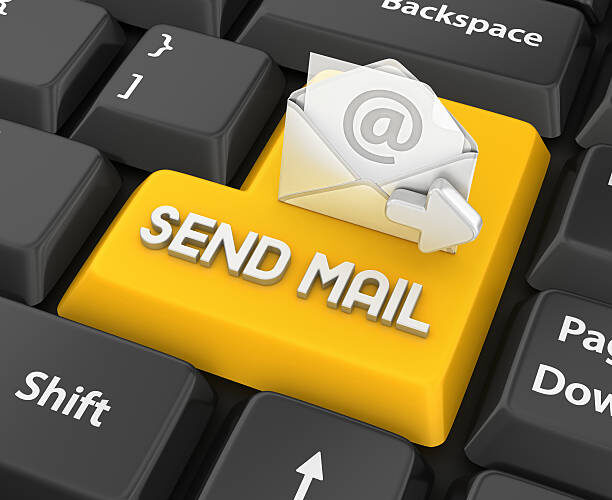In the bustling professional world of today, email is frequently the main form of communication. Whether you’re closing deals, coordinating projects, or just staying in touch, the way you craft your emails can make a big difference.
It’s not just about getting your message across; it’s about doing so with clarity, respect, and professionalism.
One phrase that seems to pop up everywhere is “Please feel free.” While it’s polite, its overuse can make your emails sound repetitive and uninspired. So, how can you keep your communication fresh and engaging?
By finding professional alternatives to “Please feel free,” you can enhance your email etiquette and leave a lasting impression. Let’s start with some creative and professional ways to say “Please feel free” that will elevate your email game.
Why Email Etiquette Matters
Email etiquette is more than just a set of rules—it’s a cornerstone of effective professional communication. Let’s break down why it matters so much:
1. Professional Image and Brand Representation
- First Impressions Count: Every email you send contributes to the recipient’s impression of you and your company.
- Showcasing Competence: Polished emails with varied language demonstrate your attention to detail and professionalism.
- Brand Consistency: Maintaining a consistent tone and style reinforces your brand’s identity and reliability.
2. Building and Maintaining Relationships
- Fostering Trust and Respect: Using polite and professional language helps build strong, respectful relationships.
- Demonstrating Value: Carefully chosen words show that you value the recipient and the relationship you’re developing.
- Positive Interactions: Small touches in your emails can turn routine communication into positive experiences that strengthen connections.
3. Clear and Effective Communication
- Avoiding Misunderstandings: Clear, specific language reduces the risk of misinterpretation.
- Direct and Concise: Professional alternatives to vague phrases like “Please feel free” ensure your message is precise and understood.
- Prompt Responses: Well-crafted emails are more likely to elicit positive and timely replies, keeping communication efficient and effective.
Understanding the importance of email etiquette and implementing these practices can transform your professional interactions. Let’s explore some polished alternatives to “Please feel free” that will help you communicate like a pro.
Alternative Phrases and Their Contexts
Using varied and professional alternatives to “Please feel free” can make your emails more engaging and polished. Here are some great alternatives, each with a brief explanation and example:
1. “You are welcome to…”
Explanation: This phrase is inviting and polite, suggesting that the recipient has your permission to take an action.
Example: “You are welcome to contact me anytime if you have questions about the project.”
2. “Feel at liberty to…”
Explanation: A slightly formal way to invite someone to do something, showing respect and openness.
Example: “Feel at liberty to share your feedback on the report.”
3. “Don’t hesitate to…”
Explanation: Encourages prompt action, conveying that the recipient should not feel any reluctance.
Example: “Don’t hesitate to reach out if you need further assistance.”
4. “I encourage you to…”
Explanation: Motivates the recipient to take action, implying that their engagement is valued.
Example: “I encourage you to submit your suggestions by Friday.”
5. “Please do not hesitate to…”
Explanation: A courteous phrase that emphasizes the recipient should feel comfortable taking action.
Example: “Please do not hesitate to contact me with any concerns.”
6. “You are free to…”
Explanation: Indicates that the recipient has the freedom to take action without any constraints.
Example: “You are free to review the document at your convenience.”
7. “If you wish, you can…”
Explanation: Offers an option, making it clear that the action is at the recipient’s discretion.
Example: “If you wish, you can join the meeting via video call.”
8. “You may want to…”
Explanation: Suggests an action politely, often used when giving advice or recommendations.
Example: “You may want to check the latest updates before our meeting.”
9. “It is perfectly fine to…”
Explanation: Reassures the recipient that the action is acceptable and encouraged.
Example: “It is perfectly fine to ask for an extension if needed.”
10. “You have my permission to…”
Explanation: Directly grants permission, often used in more formal contexts.
Example: “You have my permission to use the resources for your project.”
11. “It is acceptable to…”
Explanation: Confirms that the action is within acceptable boundaries, adding a layer of reassurance.
Example: “It is acceptable to submit the report in PDF format.
These alternatives not only enrich your email language but also help you convey your messages in a more professional manner. By using these phrases, you ensure that your communication is polished, respectful, and effective.
Each of these alternatives serves as a professional way to say “Please feel free,” enhancing your email etiquette and making a positive impression on your recipients.
Building Rapport Through Hospitable Language
Writing your email with a friendly tone helps build a connection with the reader. Using phrases like “I hope this is helpful,” shows you care. These hospitable promptings help build rapport and make a good impression.
When you close an email, mix professionalism with friendliness. Avoid being too formal, as it can make a gap between you and the reader. Go for a tone that’s both helpful and shows you’re interested in their needs.
Adding hospitable promptings makes a strong impact. It makes the reader feel okay about contacting you again. This strengthens your professional bond and sets the stage for better conversations later.
Building rapport is a continuous effort, and how you end your emails matters. Being hospitable helps your connections grow stronger over time.
Tips for Implementing These Phrases
Using professional alternatives to “Please feel free” can significantly enhance your email communication. Here are some tips to help you implement these phrases effectively:
1. Contextual Appropriateness
Understanding the Situation: Ensure that the alternative phrase you choose fits the context of your message. For instance, “Feel at liberty to…” might be more suitable for formal emails, while “Don’t hesitate to…” works well in casual or semi-formal settings.
Assessing the Recipient’s Needs: Consider the specific needs of your recipient and the nature of your relationship. A more direct phrase like “You are free to…” might be better when clear, decisive action is required.
Adapting to Different Scenarios: Be mindful of the situation. For example, if you’re giving permission for a sensitive task, “You have my permission to…” might provide the necessary authority and reassurance.
2. Tailoring Language to the Recipient
Personalizing Your Message: Tailor your language to match the recipient’s style and preferences. If you know the recipient appreciates straightforward communication, a phrase like “Don’t hesitate to…” would be appropriate.
Considering Cultural Differences: Be aware of cultural nuances. Some phrases might be interpreted differently across cultures, so choose alternatives that are universally understood and respectful.
Reflecting the Relationship: Adjust your language based on your relationship with the recipient. For a new client, a more formal alternative like “Please do not hesitate to…” might be best, whereas for a close colleague, “You are welcome to…” could be more fitting.
3. Practicing Consistency in Communication Style
Maintaining a Professional Tone: Consistently use professional language throughout your emails. This sets a standard and helps establish your credibility.
Creating a Style Guide: Consider creating a personal or team style guide that includes preferred phrases and alternatives. This ensures everyone is on the same page and helps maintain a consistent communication style.
Review and Revise: Regularly review your emails to ensure that your language remains professional and consistent. Over time, this practice will help you naturally incorporate these alternatives into your writing.
Conclusion
Mastering the art of email communication is crucial in the professional world. Using varied and professional alternatives to “Please feel free” not only enhances your message but also reflects your attention to detail, respect for the recipient, and overall professionalism.
By incorporating these alternatives, you can build stronger relationships, present a polished image, and ensure your messages are clear and effective. Remember, the right words can make all the difference in leaving a positive and lasting impression.
Call to Action
Ready to elevate your email game? Start implementing these professional alternatives in your emails today. Experiment with different phrases, find what resonates best with your recipients, and watch how it transforms your communication.
Your emails will not only be more engaging but also leave a lasting, positive impression. Give it a try and see the difference for yourself!







